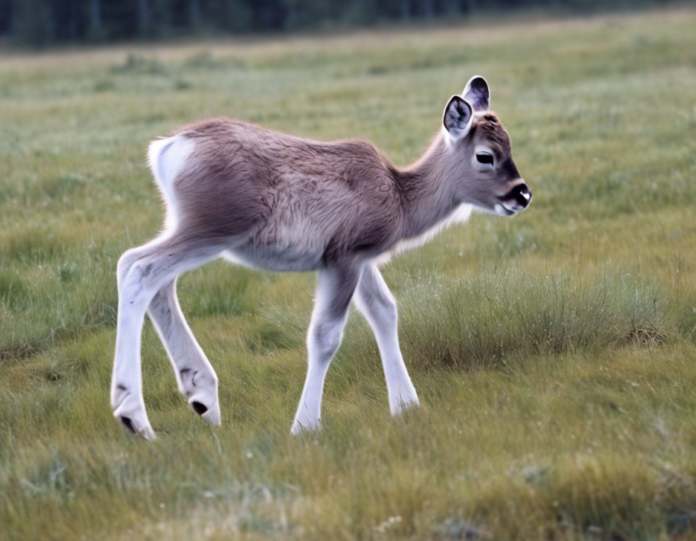In the vast wilderness of the Arctic tundra, one of the most endearing creatures that roams the snow-covered landscape is the baby reindeer. These adorable and resilient animals are known for their distinctive features, including their soft fur, majestic antlers, and agile movements. However, behind their cute and innocent appearance lies a fascinating story of survival and adaptation in one of the harshest environments on Earth.
The Birth of a Baby Reindeer
At the onset of spring, female reindeer, also known as cows, retreat to secluded areas to give birth to their young. The calving season, usually occurring in late May or early June, is a critical time for the survival of baby reindeer. Born with a thick coat of fur to protect them from the cold, these calves enter the world ready to face the challenges of their icy surroundings. Within hours of their birth, they are already able to walk, run, and keep up with the herd, showcasing their remarkable resilience from the very beginning.
Adapting to the Harsh Environment
As they grow, baby reindeer learn essential survival skills from their mothers and other members of the herd. Camouflaging themselves from predators like wolves and polar bears is crucial for their safety, and their fur coat served as an effective defense mechanism. Despite their cute appearance, baby reindeer are born into a harsh reality where predators lurk around every corner, making their ability to blend in with their surroundings essential for their survival.
Navigating the Arctic Landscape
Navigating the vast and treacherous Arctic landscape is no easy feat for baby reindeer. With their keen sense of smell and excellent vision, they rely on their instincts to seek out food sources and avoid danger. Foraging for vegetation in the snow-covered terrain is a primary task for these young animals, as they need to build up their strength and stamina to endure the harsh winter months ahead.
Building Strength and Resilience
As the summer months progress, baby reindeer go through a rapid growth phase, gaining strength and endurance to prepare for the challenges of adulthood. Their diet consists mainly of mosses, lichens, and grasses, providing them with the essential nutrients they need to thrive in the Arctic environment. Through regular physical activity and social interaction with other members of the herd, baby reindeer develop the skills they need to survive and thrive in their natural habitat.
Forming Social Bonds
In the dynamic hierarchy of a reindeer herd, social bonds play a crucial role in the survival of baby reindeer. They learn valuable skills from older members of the herd, including how to navigate the landscape, locate food sources, and detect predators. These interactions not only help baby reindeer develop essential survival skills but also foster a sense of community and belonging within the herd.
FAQs about Baby Reindeer
1. How long do baby reindeer stay with their mothers?
Baby reindeer typically stay with their mothers for about a year before becoming more independent.
2. What is the average lifespan of a reindeer in the wild?
In the wild, reindeer can live up to 15 years on average, depending on various factors such as environmental conditions and predation.
3. How do baby reindeer stay warm in the cold Arctic climate?
Baby reindeer are born with a thick coat of fur that helps insulate them from the cold. They also huddle together with the herd for warmth.
4. Do baby reindeer migrate like adult reindeer?
While baby reindeer may accompany the herd during seasonal migrations, they rely on their mothers and other adult reindeer to lead the way.
5. What are the biggest threats to baby reindeer in the wild?
Predators such as wolves, polar bears, and diseases pose significant threats to the survival of baby reindeer in their natural habitat.
In conclusion, baby reindeer are not only adorable creatures but also resilient survivors in one of the most challenging environments on Earth. Their ability to adapt, learn, and thrive in the harsh Arctic landscape is a testament to the strength and resilience of these magnificent animals. From camouflaging themselves from predators to foraging for food and forming social bonds within the herd, baby reindeer showcase a remarkable journey of survival from the moment they are born.

